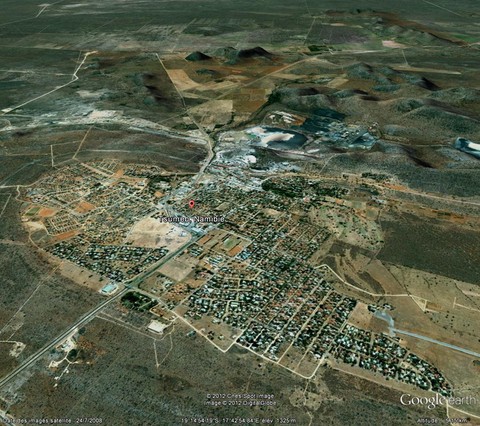 Geology of Tsumeb, Namibia
Geology of Tsumeb, Namibia
The exceptional site of Tsumeb was discovered by Europeans in 1893 during a mining exploration expedition although already known by the natives as evidenced by archaeological remains of copper casting. Its immense mineralogical diversity makes it, for collectors, a site of particular interest; nearly 226 different minerals, including 40 specific to this mine, have been described! The minerals copper, lead, silver, arsenic, antimony, zinc, iron, cadmium, cobalt, germanium, gallium, mercury, molybdenum, vanadium and tin were extracted.
The site is located in kaarstified sedimentary rocks whose roof collapsed at the end of the Proterozoic (700 million years ago). The transgressive episodes (rise in sea level) allowed the “cave” to be filled with sand. Over time and metamorphic episodes (orogenesis of the Damara mountain range) an accumulation of certain chemical elements took place as well as the solidification and recrystallization of sandy sediments (transformation into quartzite). The circulation of fluids allowed the establishment of numerous mineralizations in the Paleozoic which could be exploited from the 20th century.
The mining zone extends over nearly 44 levels up to 1500m below the surface...The ore-enriched pipe or "tube" is quite narrow. It was widely exploited until 1996, when mining activity ceased due to increasing extraction costs. Attempts to revive it through the exploitation of mineralogical specimens took place between 2001 and 2004 but without success...
References :
- The Giant Crystal Project Site

